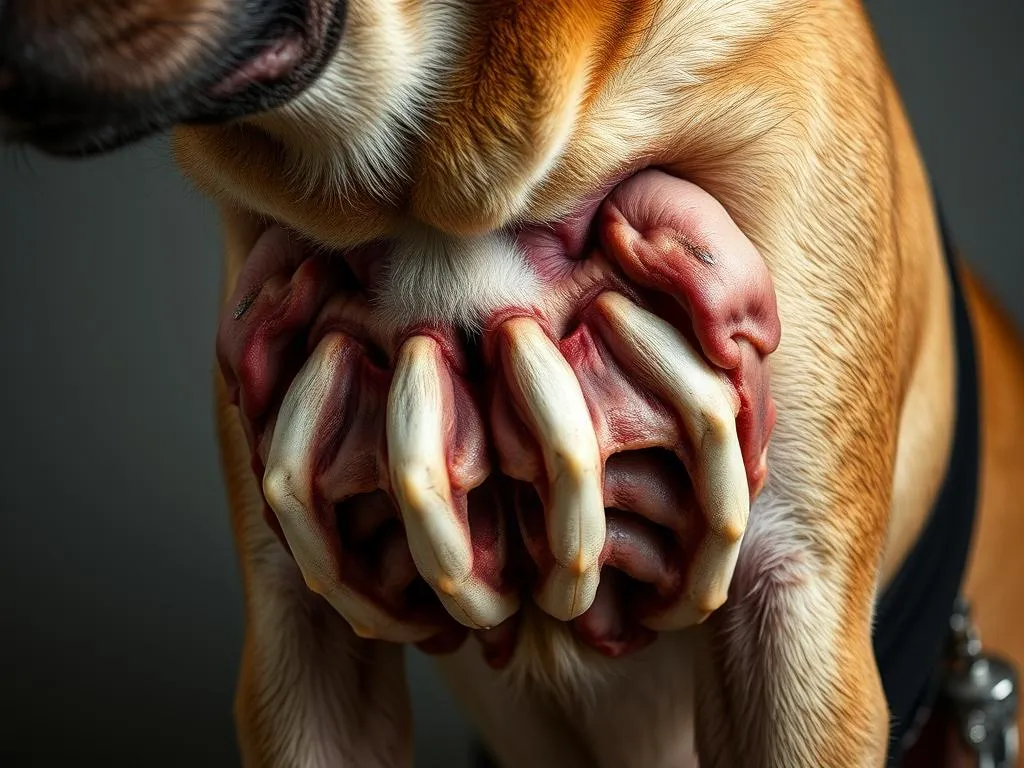
Introduction
In the realm of dog health care, understanding canine anatomy is essential for any responsible pet owner. Knowing how your dog’s body works can help you identify potential health issues early on, ensuring your furry friend remains happy and healthy. One often overlooked component of canine anatomy is the ribcage, which plays a crucial role in protecting vital organs. In this article, we will explore how many ribs do dogs have, the significance of this anatomical feature, and its implications for your dog’s health.
Understanding Canine Anatomy
Basic Structure of a Dog
A dog’s body is a complex structure made up of various systems, each playing a vital role in its overall well-being. Canine anatomy includes muscles, organs, and, importantly, bones. The skeletal system forms the framework of a dog’s body, providing support, facilitating movement, and protecting internal organs.
The Skeletal System
The skeletal system in dogs consists of various types of bones categorized into the axial and appendicular skeleton. The axial skeleton includes the skull, vertebral column, and ribcage, while the appendicular skeleton comprises the limbs and pelvis. Bones serve multiple functions: they support the body’s structure, protect organs, store minerals, and produce blood cells. Understanding this system is critical in maintaining your dog’s health.
The Ribcage in Dogs
Definition and Function of Ribs
Ribs are elongated bones that form the ribcage, encasing the thoracic cavity. The primary function of ribs is to protect vital organs, including the heart and lungs, from external trauma. They also play a role in respiration by assisting with the expansion and contraction of the chest during breathing.
How Many Ribs Do Dogs Have?
Most dogs typically have 13 pairs of ribs, which equates to 26 ribs in total. However, variations can exist among different breeds. Some breeds may have additional ribs due to genetic factors, while others may have slight deviations. It’s important to note that these variations do not usually affect a dog’s health, but they do highlight the diversity in canine anatomy.
Importance of Ribs in Dog Health
Protection of Vital Organs
The ribs serve as a protective barrier for the heart, lungs, and major blood vessels. This protection is crucial, especially in active dogs that may be more prone to injuries. An injury to the ribcage can lead to serious health consequences, such as lung punctures or internal bleeding.
Indicators of Health Issues
Rib abnormalities can sometimes indicate underlying health issues. For example, changes in rib shape or size may suggest respiratory problems, infections, or even tumors. Being attentive to your dog’s body and observing any changes can provide critical clues about their health. Regular check-ups enable veterinarians to identify and address these issues early.
Caring for Your Dog’s Rib Health
Regular Veterinary Check-ups
Routine veterinary examinations are essential for monitoring your dog’s overall health, including rib health. During a check-up, a vet will examine the ribcage for any abnormalities, perform X-rays if necessary, and assess your dog’s overall condition. Keeping up with these visits ensures that any potential issues are caught early, allowing for timely intervention.
Nutrition and Weight Management
Obesity can significantly impact your dog’s rib and overall health. Excess weight can put additional strain on bones and joints, including the ribcage, increasing the risk of injuries. To maintain a healthy weight, it is crucial to provide a balanced diet tailored to your dog’s specific needs. A well-rounded diet can help keep your dog fit and less prone to health complications.
Exercise and Activity Levels
Regular exercise is vital for maintaining strong bones and overall health. Activities such as walking, running, and playing fetch contribute to bone density and strength. Ensuring your dog gets adequate exercise not only promotes rib health but also improves cardiovascular fitness and mental well-being.
Common Rib-Related Health Issues
Rib Fractures
Rib fractures can occur due to trauma, such as accidents or falls. Symptoms include difficulty breathing, lethargy, and localized pain. Treatment typically involves pain management and, in severe cases, surgery. The recovery process may require restricted activity to allow the ribs to heal properly.
Rib Tumors
Rib tumors, although less common, can affect dogs of any breed. These tumors can be benign or malignant and often present symptoms such as swelling, discomfort, or difficulty breathing. Diagnosis may involve X-rays or biopsies, and treatment options range from surgical removal to chemotherapy, depending on the nature of the tumor.
Congenital Rib Defects
Some dogs may be born with congenital rib defects, which can lead to a variety of health issues. These defects can affect the shape or number of ribs and may result in respiratory problems. Diagnosing these conditions often involves imaging studies, and treatment may include surgical intervention or supportive care.
Conclusion
Understanding how many ribs do dogs have is more than a question of anatomy; it’s a vital aspect of dog health care. Ribs play a crucial role in protecting vital organs and indicating potential health issues. By prioritizing regular veterinary check-ups, maintaining a balanced diet, and ensuring proper exercise, you can contribute significantly to your dog’s rib health and overall well-being.
FAQs
Frequently Asked Questions
How many ribs do dogs typically have?
Most dogs have 13 pairs of ribs, totaling 26 ribs.
Can rib count vary among different dog breeds?
Yes, while most dogs have 26 ribs, some breeds may have variations due to genetic factors.
What should I look for to identify rib-related health issues?
Signs of rib-related issues may include difficulty breathing, changes in appetite, lethargy, or visible pain when touching the ribcage.
How to Ask a Vet Questions
When discussing your dog’s rib health with a veterinarian, be clear and concise about your concerns. Bring up any symptoms you’ve noticed and ask for clarification on any terminology you don’t understand. Don’t hesitate to ask for advice on preventive measures and specific exercises that can support your dog’s rib and overall health.









